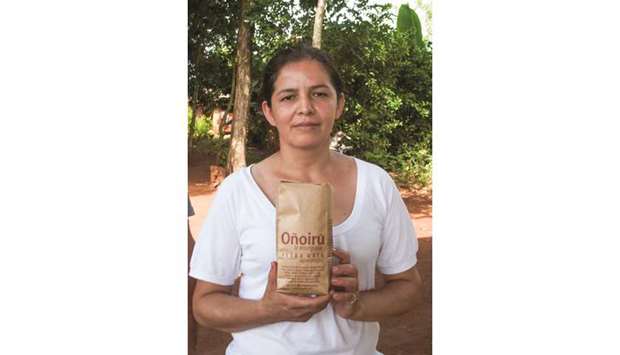Yerba mate tea, made from a holly tree whose scientific name is Ilex paraguariensis, has been beloved in South America since before Spanish colonisation.
The drink is prepared by boiling the herb in water and adding sugar. It is traditionally served in a cup made from a gourd, known as a porongo, and drunk through a metal or wooden straw called a bombilla.
Yerba mate can also be prepared in cold water, mixed with other herbs such as mint or lemon verbena, or with citrus fruit juice, to make a refreshing drink known as terere.
The herb has been popular for centuries in countries including Paraguay, Argentina, Uruguay and southern Brazil. And now, the rest of the world is starting to catch on.
In Paraguay, entrepreneurs and farmers are attempting to take advantage of this by experimenting with new products made from the herb, such as ice cream and medicinal creams.
Paraguay produces 50,000 tons of yerba mate annually, making it the world’s third-largest producer after Argentina (700,000 tons) and Brazil (500,000 tons).
The vast majority of Paraguay’s yerba mate producers are families – about 10,000 – operating on a small scale. Many of them are starting to exploit the herb’s popularity and nutritional value by turning it into new kinds of products.
Hilda Lopez, 58, lives in the city of Aregua, about 20 kilometres from the capital Asuncion.
“I am a pioneer,” says Lopez, who has been in the ice cream business for 17 years. She started off with strawberry and then began to experiment with ingredients such as cassava, beans, maize – and now yerba mate.
“People like it a lot,” she enthuses.
Lopez refuses to reveal her recipe, saying it is a professional secret, but agrees to disclose a few details: “First I cook the herb, and then I add milk, water and sugar.”
Yerba mate can also be used medicinally for conditions including chronic fatigue, heart-related complaints, low blood pressure, depression, headaches, joint pains, urinary tract infections, obesity and constipation.
The leaves have long been used by local communities to treat these ailments, but medicinal creams containing yerba mate have now become available, though the industry is still young.
Indigenous people and peasant families, meanwhile, have begun to market what they describe as organic and ecologically grown yerba mate.
They follow ancestral techniques such as harvesting between July and August, when the moon is waning, and drying the harvest with heat created by burning wood collected from the forest.
Grown and treated in this traditional way, yerba mate is “in harmony with the goal of nutritional self-sufficiency of the country,” says Nadia Lopez from the Onoiru Association for Ecological Agriculture.
Despite such initiatives, there is still huge potential for further development in the yerba mate industry, believes engineer Cornelio Nunez, an expert on the subject.
“We need to do a lot more investigative work. Argentina and Brazil have made a lot of progress, because they have institutes specialised in yerba mate,” he told local media, calling for the creation of such an institute in Paraguay as well. – DPA

POPULAR: A Paraguayan peasant woman holds a packet of organic yerba mate. Traditionally produced versions of the herb are becoming increasingly popular.
